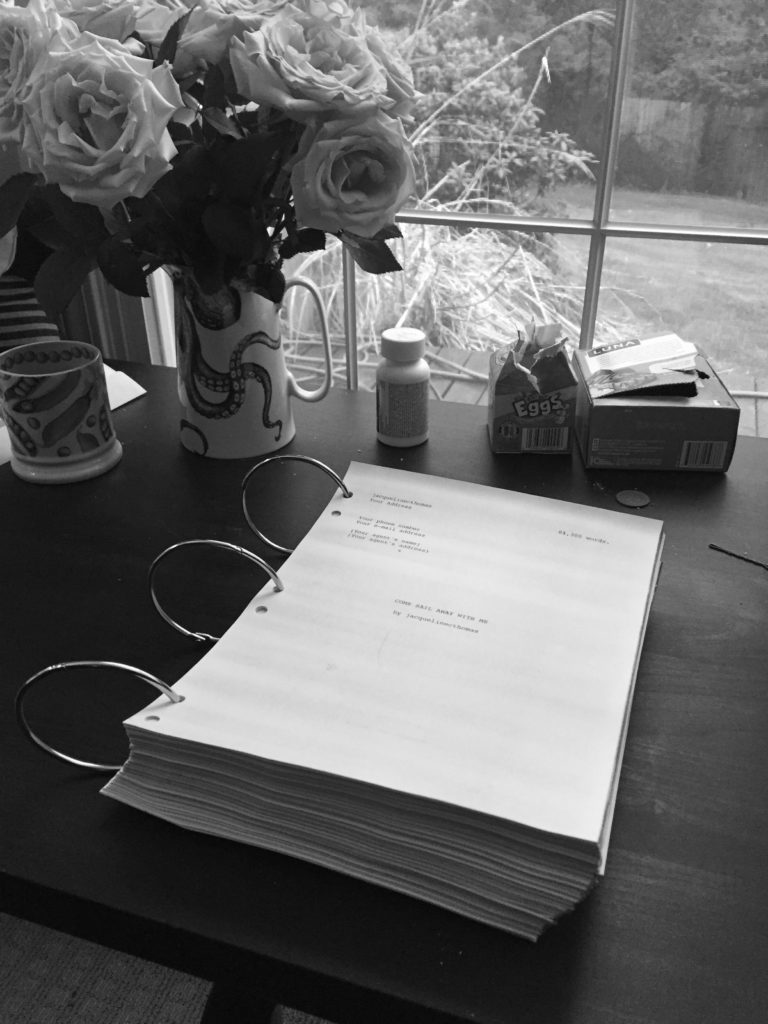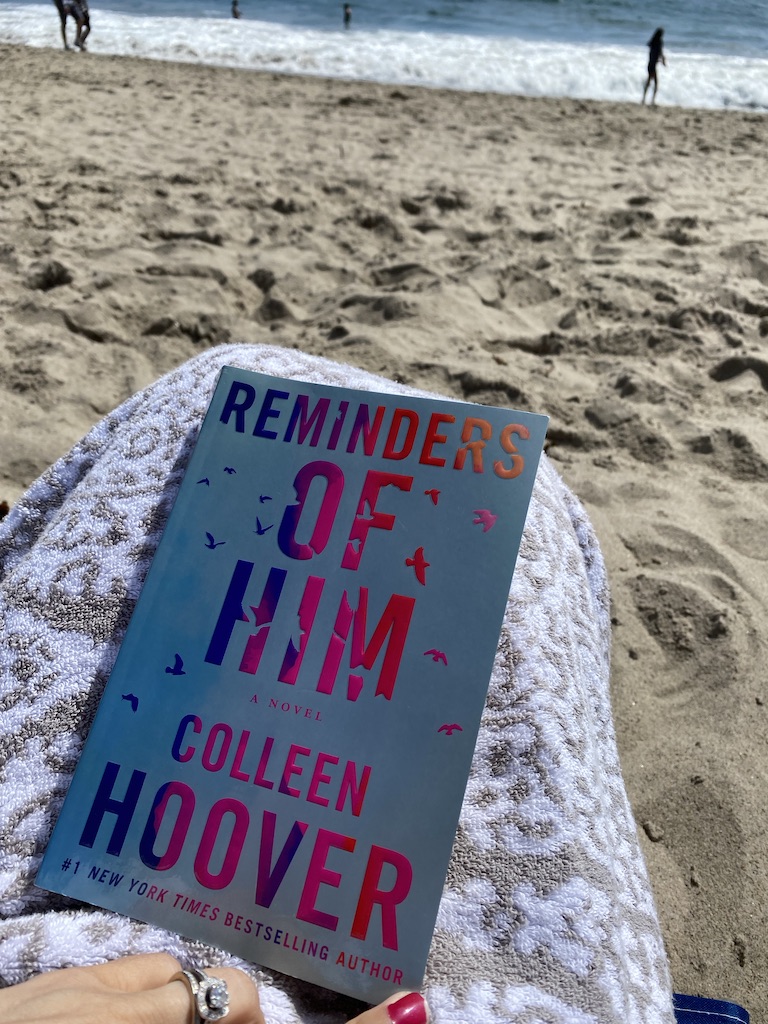
This past weekend, I had the rare privilege of having my entire house to myself. My husband and kids were back in Chicago visiting which meant 48 hours of peace and quiet. I spent the time completing my first draft of newly completed romance novel. Every writer has their own process (she mentioned process, insert eyeroll here) when it comes to a first draft. Mine has evolved over time, and boy has it. I remember the first romance book I ever completed. I thought to myself it was the best thing ever written on paper and destined to be a best-seller. I had completed it just a week before starting a new job, and I thought to myself as much as I wanted the job, that I wouldn’t be there in six months, I’d be on a book tour. Haha haha..oh bless your heart, as they say in the South. I had so much to learn, and still do.
I wanted to explain what my first draft process looks like in order to hopefully help others along the process. Here are my steps to completing my first draft:
It’s More Than Getting the Words on Paper:
For me completing a first draft is more than writing the book. It includes the first read-through too. This read through is so incredibly important because it is the closest I’ll ever be to the story and characters. This first read through is where I can make sure that I am as true to the characters as I’ll ever be. They’ve occupied my mind for as long as it has taken me to write, and in time it is important to forget them, and forget the story as much as I can, but I’ll explain that more later.
I also use this first read through, to do a spell check and grammar edit. It’s easy enough to go through it and I am helping myself in the long run. It isn’t until I’ve addressed the items below that I consider my first draft complete.
Placeholders
Ever have writers block, or know that the characters need to move in the plot but you don’t know how to get them there? This is the beauty of a placeholder in the initial writing of a manuscript. I do this a lot when I am writing a sex scene as well, as they require a lot of concentration. (if you want to learn more about how to write sex visit my earlier post) I put a descriptive place holder in the actual text that would look something like the examples below. When I am doing my first read through, this is where I fill these parts in. Placeholders are awesome, and if you’ve never tried it consider yourself leveling-up as a writer with this one! Placeholders are writer’s block mortal enemy.
Example of a placeholder:
- Jackson leaned in to kiss Leah (insert sex scene here- should be intense but sweet. Show love, vulnerability)
- With the boss chasing them (How do they get away? The need to be in Tulsa in three weeks time- don’t forget, they have no money, and she’s got a broken leg.)
- Sometimes I’m just lazy and my placeholder looks like: (Put more here) or (Expand on this)
Continuity, Names:
If you take nothing else from your first read-through it is to pay attention to names, ages, and continuity in the text. I’ve written more than a dozen completed romance novels now, and on this last one, the first chapter is written in first person and the rest of the book is in third person… Oops!
I also noticed in this first read through over the weekend, that names are not consistent throughout the manuscript for a few secondary characters. This is the time to catch these things and correct them. The goal is to do it now and forget about it as much as you can so when you read it later, you approach it as a reader would.
Pay attention to descriptions of people, locations, vocations, the details are important here and it is best to fixt these things now before you are trying to remember six months from now and you’re lost in your own book.
Pace and Timing
I think particularly in romance, pace and timing can be so important. I want my characters to fall hard and sometimes fast for each other. In some cases, they have to overcome an obstacle that will take time. Most romance books take place over days, and sometimes over years. Just make sure that the timing of events, places, and moments “fit” in the plot otherwise your reader will be bored or confused.
Pace equals if you’re bored reading it in the first draft, your end reader will be too! If a scene is boring, cut it now. I like to start my books where the story is off to the races, so to speak from page one. I’m a busy woman, and I want a story to start right away, so that’s how I write. This means, though starting a story at break-neck speed, that the reader is going to expect a certain pace in the story. Pay attention to your pace of the story and make sure you are capturing the reader’s attention through each act in the story. Look for a good story arc.
Objectivity
This at least for me has taken some time to learn how to do. I referenced the feeling I had after I wrote my first romance book, it was the best thing ever. It wasn’t. And it wasn’t until I got feedback from others that I was able to see some pretty significant flaws. You’re first draft is rough, and I don’t know a successful author who would not agree.
Now when I read through this first draft, I am looking for flaws. I am looking for things that will confuse the reader, areas where something is not fully fleshed out, plot holes, characters or scenes that don’t work. As Stephen King says, “kill your darlings.” The man is a genius, for a reason. Be merciless now, you’ll thank yourself later, take out what does not work. Read that last sentence again… Yes, kill your darlings if they do not serve the plot. Your reader won’t care if you’re clever, they aren’t reading it because you wrote it, they’re reading it because they want to know what happens to the characters in the story.
Put it Away
When you’ve completed the first read through, and you’ve killed your darlings, checked for pace, consistency, done a spell check, and filled in your placeholders, your first draft is officially complete. Now, you may take your victory lap, open that bottle of champagne or indulge in a creative hangover.
While you may think your first draft looks like it is ready to sit on the front page of the New York Times Book Section in the Sunday edition, I promise you, it’s not. A first draft is like a project in its infancy, it will have a lot more growing (revisions) to go before it’s ready to go out into the big, bad world.
Now, with the exception of the first book that I keep referencing, I’ve stuck to a hard and fast rule, I will not touch the first draft of a manuscript for at least six months at minimum. This is another Stephen King tip. When you write fiction, you are immersed in the world you’re creating. Your characters feel like they’re a piece of you, after all you created them. The point is, you’re too close to the story, and your characters to be objective. The story is still too fresh in your head and your heart. Time is the only cure for this. Put your first draft away for at least six months, and no matter how tempted you are to go back though it, don’t do it. You need that time, trust me!
So in closing, I sit at the end of a first draft today, where the book is still fresh in my mind and the characters are well-defined and vivid. I’ll visit them again 6-8 months from now, hoping that I still feel that spark between them, the story still engages me, and I find myself rooting for their love story. I hope that some of these tips help you complete your first draft and set you up for success in your later drafts.

